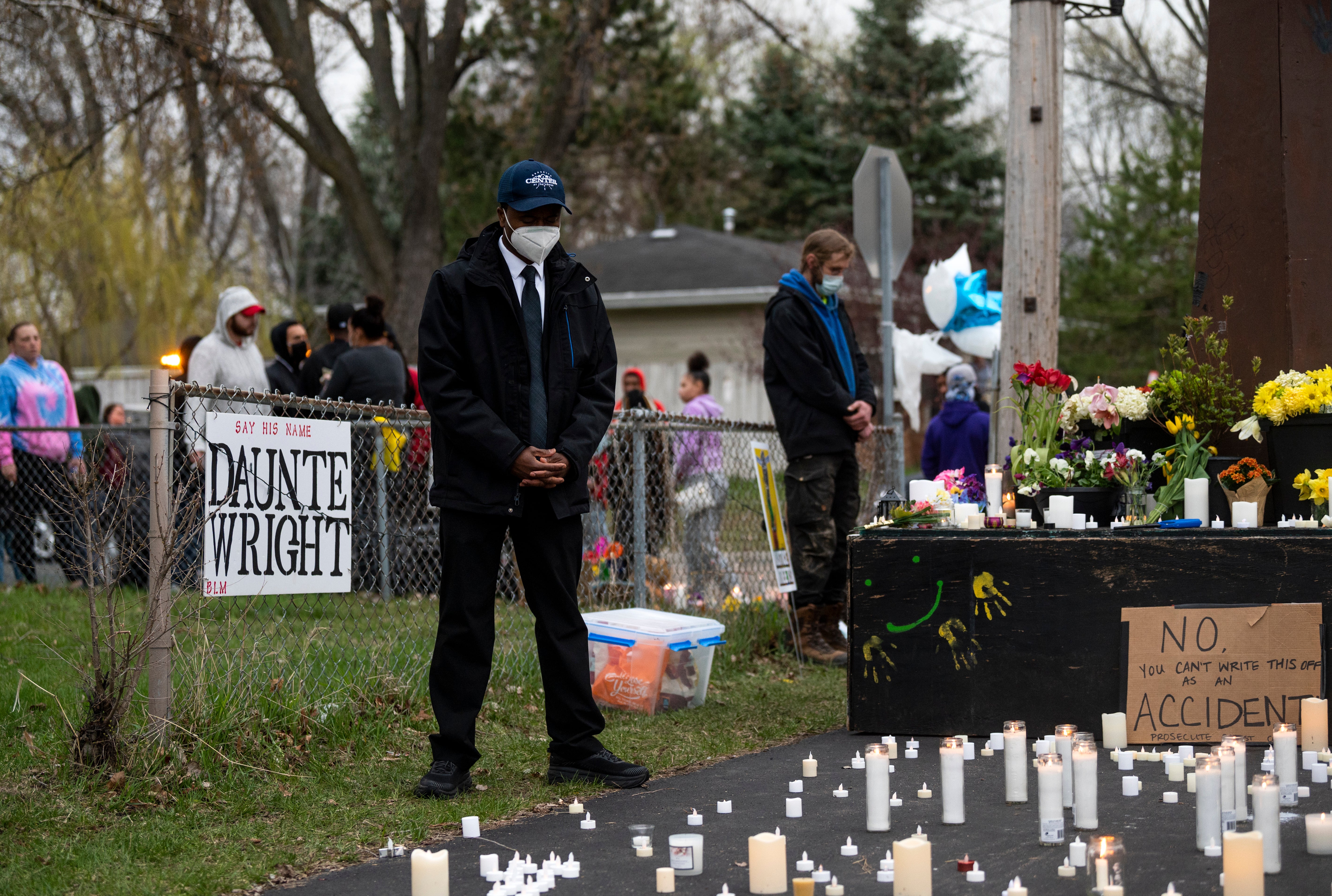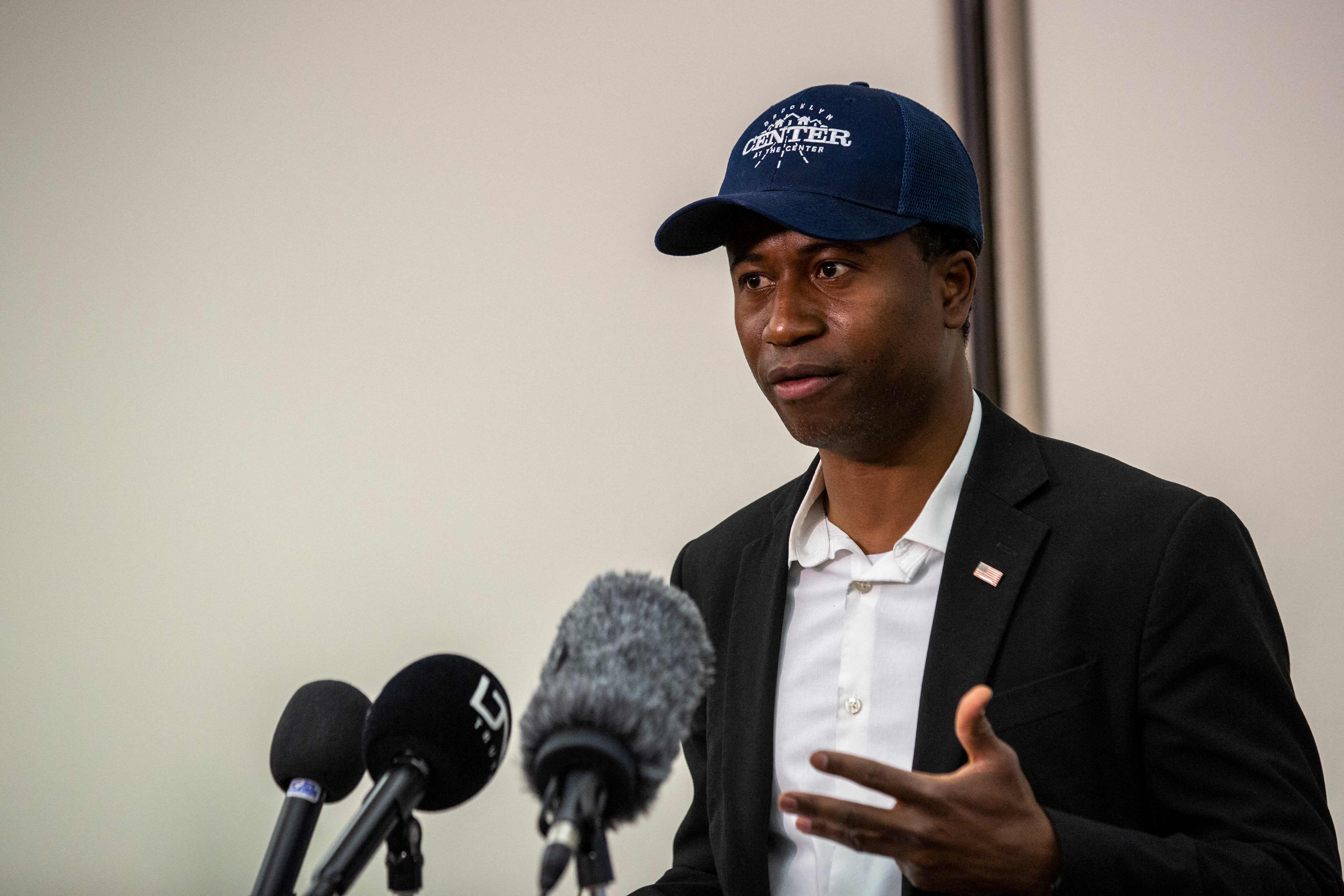Brooklyn Center mayor Mike Elliott on Daunte Wright, George Floyd and Black leadership during a police crisis
Brooklyn Center mayor Mike Elliott in an in-depth conversation with Josh Marcus talks about the future of policing


Your support helps us to tell the story
From reproductive rights to climate change to Big Tech, The Independent is on the ground when the story is developing. Whether it's investigating the financials of Elon Musk's pro-Trump PAC or producing our latest documentary, 'The A Word', which shines a light on the American women fighting for reproductive rights, we know how important it is to parse out the facts from the messaging.
At such a critical moment in US history, we need reporters on the ground. Your donation allows us to keep sending journalists to speak to both sides of the story.
The Independent is trusted by Americans across the entire political spectrum. And unlike many other quality news outlets, we choose not to lock Americans out of our reporting and analysis with paywalls. We believe quality journalism should be available to everyone, paid for by those who can afford it.
Your support makes all the difference.Mike Elliott understood the visceral threat police pose to Black men long before he was the mayor of Brooklyn Center, the tight-knit Minneapolis suburb that was roiled by protests this spring after police shot and killed Daunte Wright, an unarmed Black 20-year-old, amid the already tense George Floyd murder trial happening just 10 miles away.
Mr Elliott was in 8th or 9th grade, only a few years after his family immigrated to the area from Liberia, and was playing at a park with his friends.
“Out of nowhere, a pair of police officers shows up and takes myself and another Black young man, handcuffs us and puts us in the back of his car and says that we’re suspects in a break-in,” mayor Elliott told The Independent. “There were other kids who were playing in the park with us who were white. But we were the only two Black young men, and we were taken as suspects.”
The person who reported the break-in said the junior high schoolers weren’t responsible, and police eventually let them go. Years later, he’d think back to the experience once he was in charge of making a whole city of people feel safe from police, after a shocking reminder for many that they weren’t.
“It’s important to have that lived experience in your elected leadership when it comes to issues like this,” he said. “It does inform, from a real place, the policies that we need to put in place to protect all members of the community.”
On 11 April, however, he didn’t have time to think about changing policies just yet. He rushed to the street corner where former officer Kim Potter, a 26-year veteran, shot Mr Wright, during a traffic stop for expired tags, apparently mistaking her gun for a Taser. (Ms Potter has since resigned from the force and been charged with manslaughter.)
An impromptu memorial and protest sprang up. People were furious that police remained there, and Mr Wright’s body remained on the ground for hours as investigators began their work at the scene. The mayor ordered the police away as soon as he could. It showed him just what a delicate balance he needed to strike, between using officers to maintain public safety, and allowing people to grieve and protest when those officers get it wrong.
“People were going to be triggered by the presence of law enforcement, whom they viewed as having done the killing of Daunte and George Floyd and all the other deaths that we’ve seen at the hands of law enforcement,” he said. “Not only here in Minnesota but around the country. This is a visible representation for the people that they were angry with.”
Soon there would be a lot more police in Brooklyn Center, and a lot more reasons the community was angry. That night, protesters gathered around the Brooklyn Center police station, and were met with batons, police in riot gear and tear gas. Chief Tim Gannon eventually cut the lights, saying protesters were throwing cans and bricks at the heavily armoured officers, and gave demonstrators 10 minutes to disperse before the demonstration was declared unlawful.
“I never led a city through something like this before,” Mr Elliott said. “I didn’t have a playbook.”
And so, armed with knowledge of how common it is for people to experience trauma at the hands of police, he set about doing something uncommon for a city in the midst of a policing crisis: making changes to the police. Fast.
The next day, on Monday, he fired the city manager, who had opposed Ms Potter leaving the force, and assumed “operational control” of the police department. He and the city council also ban the use of tear gas and kettling, the practice of penning in protesters and making mass arrests, as well as ordering officers further and further back each night from where protesters stood.

Even with that approach, he wasn’t always in control. Mr Elliott said he spoke with Minnesota governor Tim Walz, who encouraged him to request state assistance, which he was told would help him get federal resources eventually if Brooklyn Center began to look like Minneapolis last summer. What that request for assistance got him was Operation Safety Net, a joint local law enforcement effort formed to prevent rioting during the Derek Chauvin trial, which brought roughly 800 heavily armed officers and National Guard troops to Brooklyn Center, kitted out in riot gear and driving military Humvees.
That Monday, local officers fired tear gas just minutes after the Brooklyn Center council banned it, and protesters said they were often given little warning before they were kettled and arrested en masse throughout the demonstrations. In another break from the norm, the mayor hasn’t been afraid to criticise a siege mentality among some officers.
“They are totally protected head to toe,” he said. “There’s sort of a zero tolerance attitude that I think leads to more force that is counterproductive.”
As for the continued riot tactics: “There’s no doubt in my mind that was an overreach. That was something that should’ve never happened and something that should never happen again. We were in a very tough spot.”
(Soon after, the Minneapolis city council passed a non-binding resolution against tear gassing as well. Minneapolis Mayor Jacob Frey, who declined to be interviewed for this story, has operational control of the Minneapolis police, and has resisted calls to restrict the police use of riot control weapons.)
An even deeper divergence from Minneapolis came in the aftermath of the protests. On 16 May, the Brooklyn Center city council passed a resolution to create non-armed public safety responders who would answer calls for mental health and low-level traffic incidents. In Minneapolis, the city council and activist groups have been pushing for similar changes, which the mayor has resisted.
Law enforcement criticised the move, saying it would make the city less safe, but the mayor says nearly 90 per cent of police calls in Brooklyn Center aren’t crime-related, and other cities like Eugene, Oregon, and Berkeley, California, have successfully rolled out similar programmes.
“The resolution is going to transform our system so that police aren’t the only available response to everything,” he said.
Even if it’s politically risky, Mr Elliott says pursuing these changes is worth it.
“What makes it possible is elected officials, the leadership, deciding that it’s more important to make transformative change happen than it is to be re-elected,” he said. “I want to be re-elected. But if it means that I don’t get reelected, I’d much rather have the change happen.”
Beyond just policy reforms, the mayor is also planning multiple “community healing sessions” with a facilitator as well. None of these changes alone will erase all the community’s pain, nor can it bring Mr Wright back, but the mayor is hoping it’ll forge a different kind of future, where a young Liberian kid at the park, or an impulsive teen at a traffic stop, don’t need to be afraid anymore.



Join our commenting forum
Join thought-provoking conversations, follow other Independent readers and see their replies
Comments